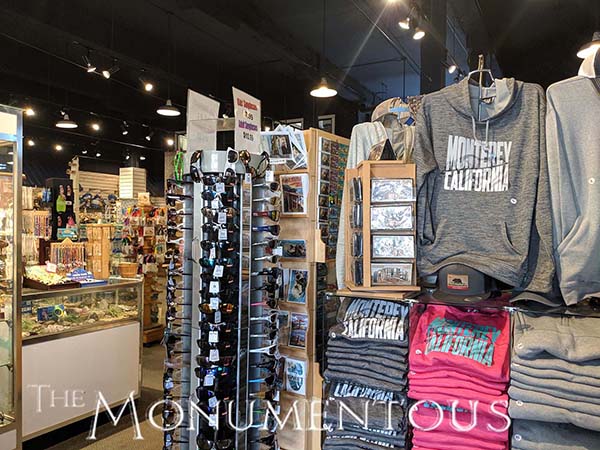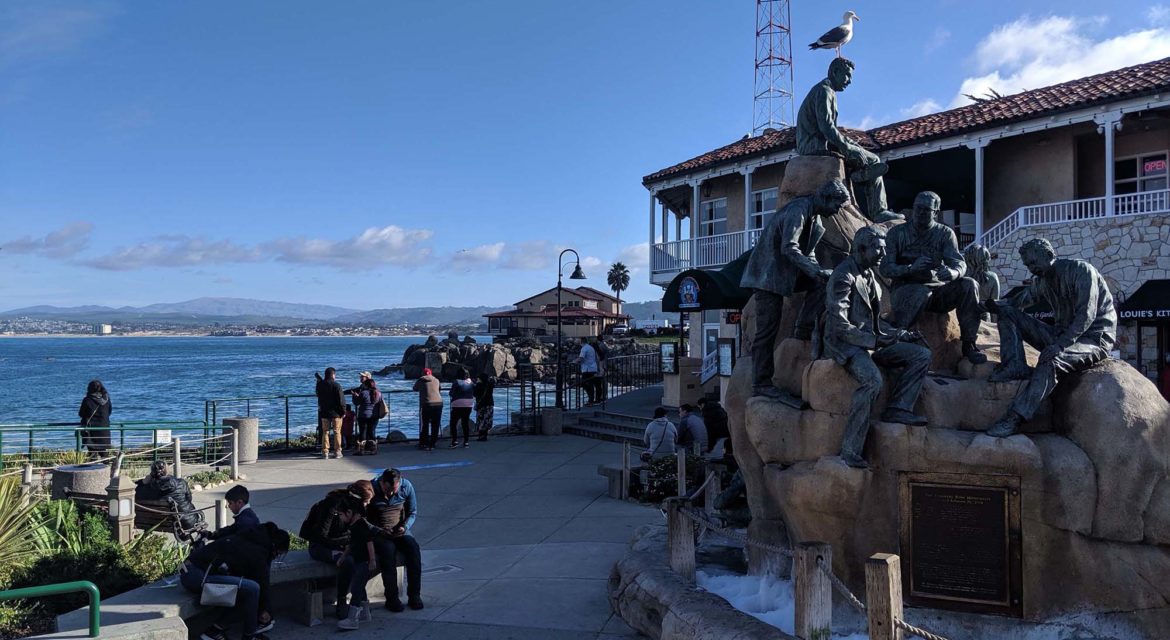 Hotels, restaurants and boutiques have been able to thrive on Cannery Row, which is a waterfront strip located in Monterey, California. Much of that is due to the unique combination of history and attractions that the city has actively cultivated. By actively embracing the history of the area while also enabling economic opportunities for businesses of all types, Cannery Row highlights what it means to transform what would otherwise just be another beach town street into a destination that attracts audiences from all over the world.
Hotels, restaurants and boutiques have been able to thrive on Cannery Row, which is a waterfront strip located in Monterey, California. Much of that is due to the unique combination of history and attractions that the city has actively cultivated. By actively embracing the history of the area while also enabling economic opportunities for businesses of all types, Cannery Row highlights what it means to transform what would otherwise just be another beach town street into a destination that attracts audiences from all over the world.

The Home of Sardine Canning Factories
Ocean View Avenue in Monterey was once home to a booming sardine-canning industry that was famously chronicled in John Steinbeck’s 1945 novel “Cannery Row”. Ocean View Avenue was actually renamed later in honor of the book. The fishing industry that thrived on this strip dates back to the 1850s though, with the very first cannery, Monterey Fishing and Canning Company, opening in 1902.
 It was around this time that Monterey’s oval sardine can became world-famous by feeding armies and allied nations at war in World War I. Through 1916 to 1918, Cannery Row went from having just a few canning plants to nearly ten. A massive fire and trouble adopting new fishing techniques stilted that expansion, but it would become known as the “Sardine Capitol of the World” when it helped to supply sardines to World War II troops. However, the entire industry bottomed out a few years after the conclusion of the war as the entire bay had been depleted of sardines.
It was around this time that Monterey’s oval sardine can became world-famous by feeding armies and allied nations at war in World War I. Through 1916 to 1918, Cannery Row went from having just a few canning plants to nearly ten. A massive fire and trouble adopting new fishing techniques stilted that expansion, but it would become known as the “Sardine Capitol of the World” when it helped to supply sardines to World War II troops. However, the entire industry bottomed out a few years after the conclusion of the war as the entire bay had been depleted of sardines.
Through the 1960s, many cannery buildings burnt to the ground, which led to a major downturn. However, the opening of The Sardine Factory in 1968 signaled the beginning of a rebirth for the area. Restaurants, cafes, and souvenir shops began to appear up and down the strip, with many of them being housed in the abandoned canneries. The Monterey Bay Aquarium opened up 1984, further transforming the space into a tourist destination. This history and status is reflected in the Cannery Row Monument, which pays tribute to the many diverse characters that have been vital to the evolution of Cannery Row.
Many of the figures in the Cannery Row Monument directly reference the bustling sardine canning days. This embrace of the past to define the present has had a notable impact on the culture and economy of the entire city.

Celebrating the Literary and Actual History of Monterey
Cannery Row has reinvented itself as a lively destination with numerous ties to its historic roots. The Cannery Row Monument is the most notable example of this connection, but it’s also contained in the shops and stores that line the street, some of which utilize the original cannery building structures. John Steinbeck also has a notable presence throughout Cannery Row, underscoring how he has become an icon for Monterey.
 That presence can be seen in many of the businesses throughout the space. Using this history and literary notoriety has allowed many of them to cultivate an identity that attracts visitors from all over. These visitors can experience over 25 different restaurants as well as numerous wine tasting rooms which take advantage of the over 39,000 acres of wine grapes in Monterey County.
That presence can be seen in many of the businesses throughout the space. Using this history and literary notoriety has allowed many of them to cultivate an identity that attracts visitors from all over. These visitors can experience over 25 different restaurants as well as numerous wine tasting rooms which take advantage of the over 39,000 acres of wine grapes in Monterey County.
Cannery Row also hosts countless events throughout the year that are designed to appeal to residents and tourists of all ages. The annual Monterey Bay Half Marathon is one of the more notable happenings, with participants running the length of Cannery Row itself. On the way back, runners travel the Monterey Bay Coastal Recreation Trail that parallels Cannery Row. All of these events and activities have made the entire area a highlight on maps and guides to Monterey and the central California region.
By celebrating the literary and actual history of the area, Cannery Row has been able to create an identity has been used to help make the entire area a destination for both residents and visitors. In doing so, it has defined a legacy that is tied to the past and future of the entire region.

Transforming Monterey
 Cannery Row touts itself as being ideally suited for visitors of all kinds that brings in millions of people to Monterey every year. The natural beauty of the area attracts audiences, but the monuments, attractions and businesses that utilize the identity built on the history of the area has made something much more.
Cannery Row touts itself as being ideally suited for visitors of all kinds that brings in millions of people to Monterey every year. The natural beauty of the area attracts audiences, but the monuments, attractions and businesses that utilize the identity built on the history of the area has made something much more.

